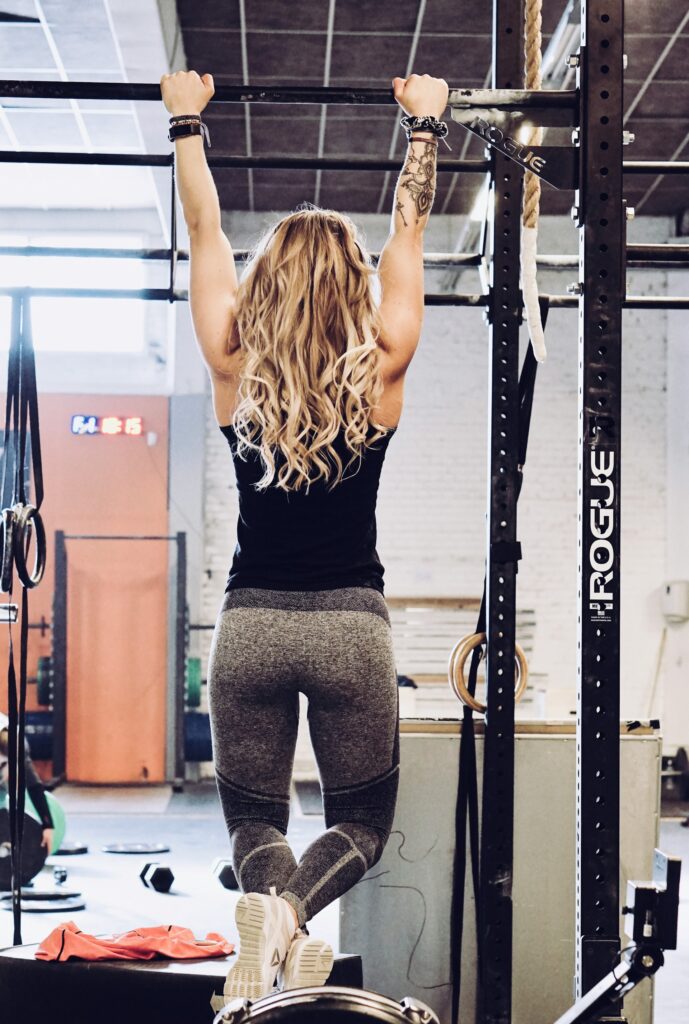Dead hangs are simple yet powerful exercises that can transform your fitness routine. You grab a pull-up bar, hang with your arms straight, and let your body relax. Sounds easy, right? But don’t let the simplicity fool you. Dead hangs pack a punch, offering benefits that improve your strength, posture, and overall health. Whether you’re a gym newbie or a seasoned athlete, dead hangs belong in your workout plan. Let’s dive into why you should start doing dead hangs today and explore the life-changing dead hang benefits.

Introduction | The Science | The Benefits | Who Can Benefit? | How to Start | Build a Routine | FAQs | Takeaway
Introduction to Dead Hangs
What Are Dead Hangs?
A dead hang is when you hang from a bar or sturdy surface with your arms fully extended and your feet off the ground. Your body stays relaxed, and you hold the position for as long as you can. No swinging, no pulling—just hanging. This exercise strengthens your upper body and stretches your muscles, making it a fantastic addition to any fitness routine.
Why Dead Hangs Are Gaining Popularity
Dead hangs are trending because they’re accessible and effective. You don’t need fancy equipment—just a pull-up bar or even a strong tree branch. Fitness enthusiasts, climbers, and physical therapists praise dead hangs for their ability to boost strength and fix posture issues. Plus, they’re low-impact, so almost anyone can try them. With so many dead hang benefits, it’s no wonder people are jumping on board.
The Science Behind Dead Hang Benefits
How Dead Hangs Work Your Body
When you do a dead hang, gravity pulls your body downward, engaging multiple muscle groups. Your hands grip the bar, your shoulders stabilize, and your core keeps you steady. At the same time, your spine decompresses, giving your back a gentle stretch. This combination of strength and stretching is what makes dead hangs so unique.
Key Muscles Targeted by Dead Hangs
Dead hangs work several key areas:
- Grip muscles: Your forearms and hands get stronger from holding your body weight.
- Shoulders: Your rotator cuff and deltoid muscles stabilize your shoulder joints.
- Core: Your abs and lower back engage to keep your body still.
- Back: Your lats and upper back muscles activate to support your posture.
These muscle groups work together, making dead hangs a full-body exercise with impressive benefits.
Top Dead Hang Benefits for Your Health
Dead hangs offer a wide range of advantages. Here are the top dead hang benefits that will convince you to start today.
Improved Grip Strength
Holding onto a bar builds serious grip strength. Stronger hands and forearms help with everyday tasks like carrying groceries or opening jars. For athletes, better grip means improved performance in sports like rock climbing, weightlifting, or gymnastics. Dead hangs train your grip without complicated equipment.
Enhanced Shoulder Stability and Mobility
Dead hangs strengthen the muscles around your shoulders, reducing the risk of injury. They also stretch tight shoulder muscles, improving your range of motion. If you spend hours hunched over a desk, dead hangs can counteract that stiffness and keep your shoulders healthy.
Better Posture and Spinal Health
Slouching all day puts pressure on your spine. Dead hangs let gravity gently stretch your spine, relieving compression. This improves your posture and aligns your back. Over time, you’ll stand taller and feel more confident.
Core Strength Development
Dead hangs “also strengthen your core muscles, as you’ll use them to stabilise yourself as you hang,” says Dr. John Kirsch, an orthopedic surgeon from Wisconsin. This strengthens your abs, obliques, and lower back. A stronger core supports better balance and reduces strain during other exercises like squats or running, especially for overweight people.
Reduced Back Pain and Tension
Dead hangs decompress your spine, easing tension in your lower back. If you sit for long hours or lift heavy weights, this benefit is a game-changer. Many people report less back pain after adding dead hangs to their routine.
Increased Flexibility and Range of Motion
Hanging stretches your upper body, from your shoulders to your lats. This boosts flexibility, making movements like reaching or lifting easier. More flexibility also lowers your chance of muscle strains during workouts.

Who Can Benefit from Dead Hangs?
Dead hangs are versatile, so almost anyone can gain from them. Let’s break it down.
Beginners to Advanced Athletes
If you’re new to fitness, dead hangs are a great starting point. They’re simple and build strength gradually. For advanced athletes, dead hangs improve grip and shoulder stability, enhancing performance in complex moves like pull-ups or deadlifts.
Office Workers and Sedentary Lifestyles
Sitting all day wreaks havoc on your posture and back. Dead hangs counteract these effects by stretching your spine and strengthening your upper body. Just a minute a day can make a big difference.
Climbers, Weightlifters, and Fitness Enthusiasts
Climbers rely on grip strength, and dead hangs deliver. Weightlifters benefit from stronger shoulders and core stability. Fitness buffs love dead hangs for their ability to complement other workouts and prevent injuries.
How to Start Doing Dead Hangs Today
Ready to try dead hangs? Here’s how to get started safely and effectively.
Proper Dead Hang Form and Technique
Follow these steps:
- Grab a pull-up bar with an overhand grip, hands shoulder-width apart.
- Hang with your arms fully extended and feet off the ground.
- Relax your shoulders—don’t shrug them up.
- Keep your core engaged and body still, avoiding swinging.
- Hold for as long as you can, then lower yourself gently.
Equipment Needed (Pull-Up Bar or Alternatives)
A pull-up bar is ideal, but you can use a sturdy tree branch, playground bar, or even a doorframe pull-up bar. Make sure it’s secure and can support your weight.

Beginner Tips for Building Hang Time
If you’re new, start with short hangs—10 to 20 seconds—and gradually increase your time. Try these tips:
- Bend your knees slightly if your feet touch the ground.
- Use a step or box to get into position safely.
- Rest for 30 seconds between hangs and do 3-5 sets.
Common Mistakes to Avoid
Don’t make these errors:
- Shrugging your shoulders: Keep them relaxed.
- Swinging: Stay still to target the right muscles.
- Gripping too tightly: Hold firmly but not painfully.
Incorporating Dead Hangs into Your Routine
Dead hangs are easy to add to your schedule. Here’s how to make them a habit.
How Often Should You Do Dead Hangs?
Aim for 3-5 sessions per week. Start with 1-2 minutes total (split into sets) and work up to 3-5 minutes as you get stronger. Even a quick daily hang can yield benefits.
Combining Dead Hangs with Other Exercises
Dead hangs pair well with:
- Pull-ups or chin-ups for upper-body strength.
- Planks for core stability.
- Stretching routines for flexibility.
Do dead hangs at the start of your workout to warm up or at the end to stretch.
Sample Dead Hang Workout Plan
Try this beginner-friendly plan:
- Monday/Wednesday/Friday:
- 3 sets of 15-second dead hangs (30 seconds rest between).
- 2 sets of 10 bodyweight squats.
- 1 minute plank.
- Increase hang time by 5 seconds each week.
FAQs About Dead Hang Benefits
Got questions? Here are answers.
How Long Should You Hold a Dead Hang?
Beginners should aim for 10-30 seconds per set. As you improve, work toward 60 seconds or more. Listen to your body and stop if you feel pain.
Can Dead Hangs Help with Injury Recovery?
Dead hangs can aid recovery by stretching the spine and shoulders, but consult a doctor or physical therapist first, especially if you have back or shoulder issues.
Are Dead Hangs Safe for Everyone?
Most people can do dead hangs safely, but avoid them if you have certain injuries (like rotator cuff tears) or conditions. Check with a healthcare provider if you’re unsure.
Takeaway: Start Reaping Dead Hang Benefits Today
Why Dead Hangs Are Worth Your Time
Dead hangs are a simple, effective way to boost your strength, fix your posture, and feel better overall. From stronger grip to less back pain, the dead hang benefits are hard to ignore. They’re quick, require minimal equipment, and work for all fitness levels.
Call-to-Action: Try Your First Dead Hang Now
Don’t wait! Find a pull-up bar or sturdy surface, hang for 10 seconds, and feel the difference. Add dead hangs to your routine today and watch your body transform. Share your progress in the comments or on social media—we’d love to hear how dead hangs change your life!
More from Bananomad
- Discover how to keep your fitness routine on track anywhere with our guide to travel-friendly workouts, compact exercise equipment, and expert tips for staying active.
- Learn how to celebrate achievements without losing momentum with 15 science-backed rewards that enhance motivation and align with your long-term goals.
- Discover 10 healthy mushrooms, from common button to unique lion’s mane. Find out how to select, cook, and savor these nutrient-packed fungi.


Leave a Reply